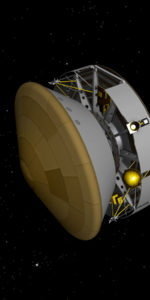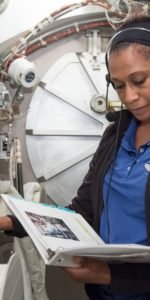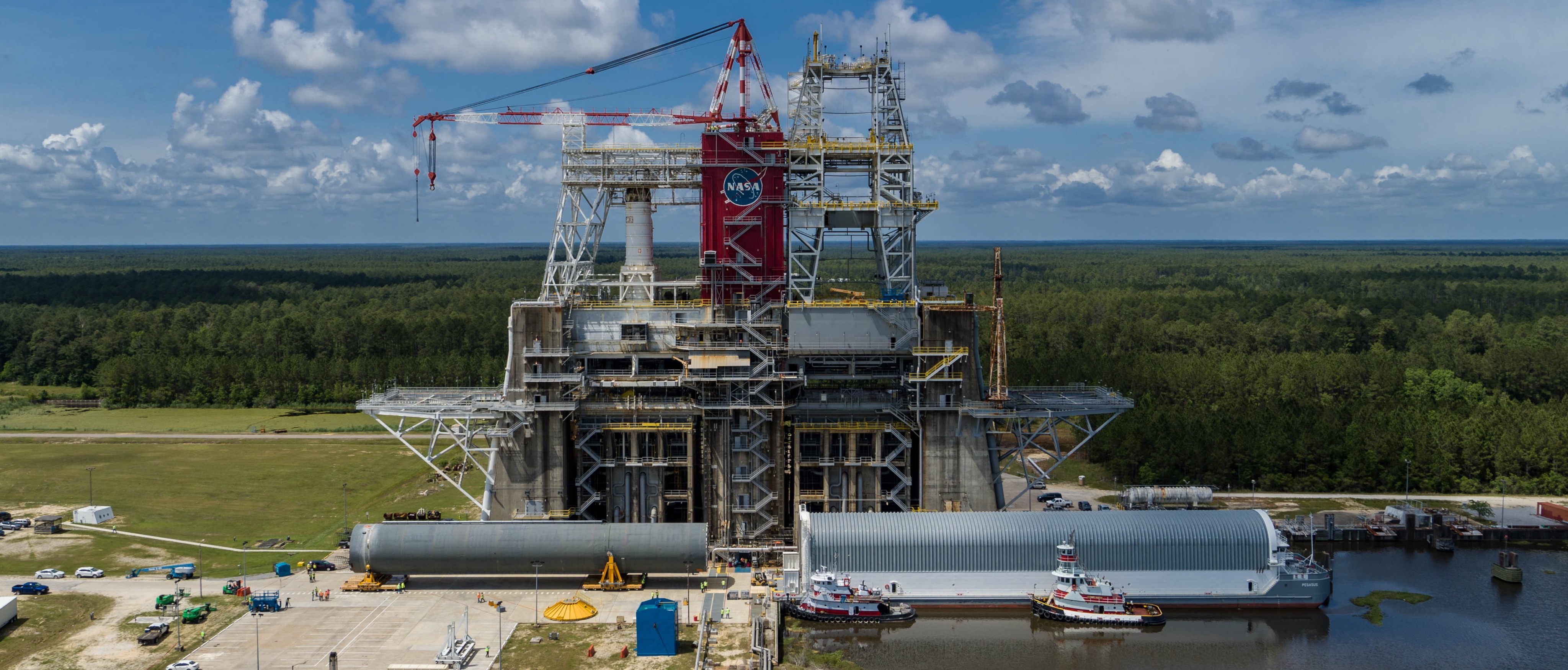
NASA has announced a temporary pause to the in-progress “Green Run” testing of the first Space Launch System (SLS) core stage at the Stennis Space Center in Bay St. Louis, Miss., in response to the ongoing threat to the Gulf Coast states from Tropical Storms Marco and Laura. “We’re keeping an eye on Tropical Storms Marco and Laura,” tweeted NASA Administrator Jim Bridenstine on Monday. “NASA Stennis engineers have paused Green Run testing for the @NASA_SLS rocket and secured the core stage and B-2 test stand until the storms have passed and the team can safely resume work on-site.”
At the time of the pause, Stennis was working towards the fifth of eight Green Run tests—focused on the core stage’s Thrust Vector Control (TVC) and hydraulics—and in spite of the threat from Marco and Laura NASA maintains an expectation that the long-awaited test-firing of the four RS-25 engines will occur by November.
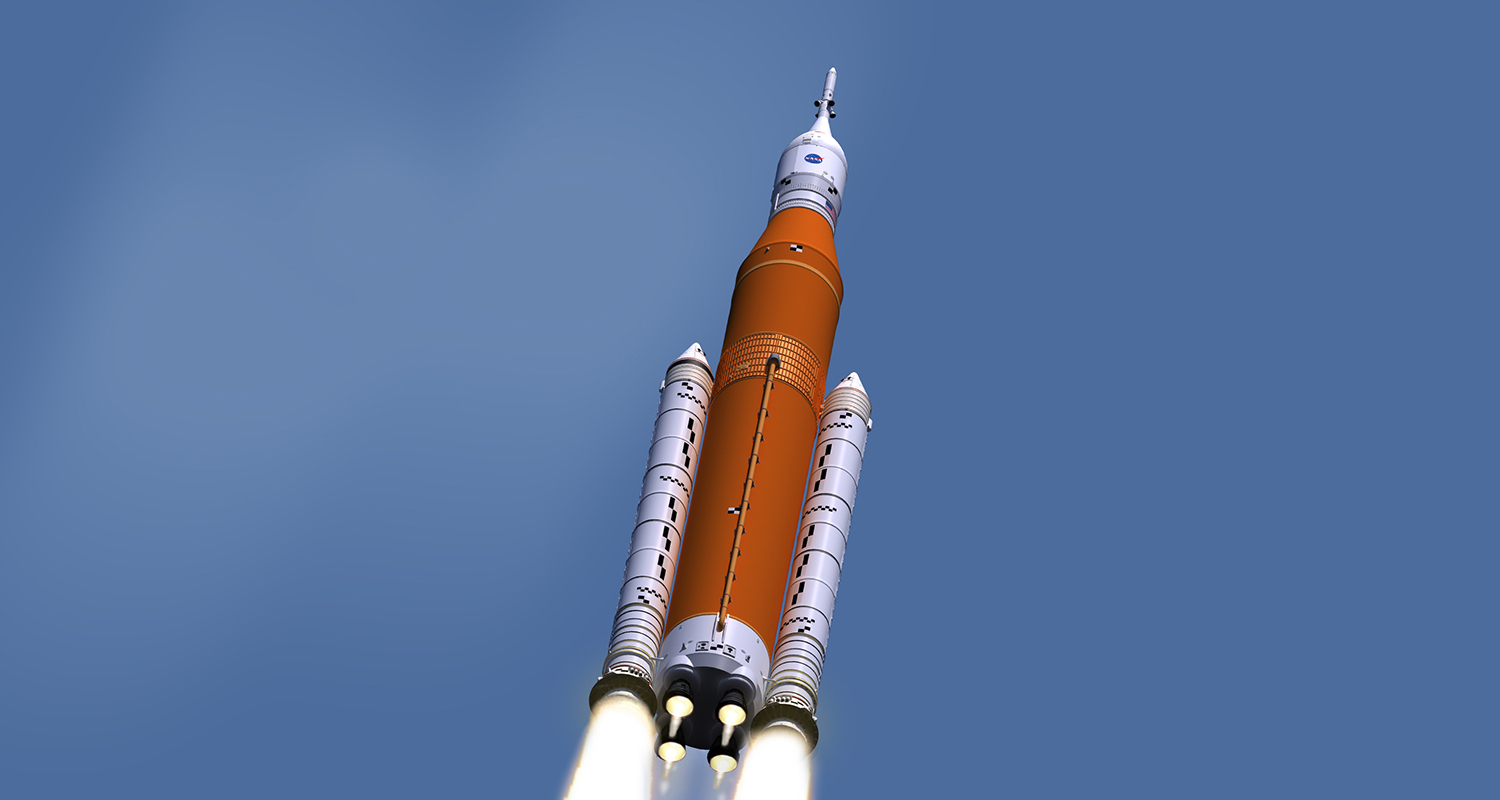
At the same time, United Launch Alliance (ULA) has moved the scheduled launch of its triple-barreled Delta IV Heavy from Wednesday morning to no sooner than 2:11 a.m. EDT Thursday. The flight will originate from Space Launch Complex (SLC)-37B at Cape Canaveral Air Force Station, Fla., and is laden with the highly secretive NROL-44 payload for the National Reconnaissance Office.
These two exceptionally dynamic weather patterns have evolved rapidly in a matter of just a few days. Marco arose in the middle of last week as a fast-moving tropical wave, before quickly intensifying into a strong tropical storm to affect parts of the Caribbean, western Cuba and Mexico’s Yucatan peninsula, together with the U.S. Gulf Coast. After entering the warm waters of the Gulf of Mexico over the weekend, it briefly intensified to hurricane strength, then weakened due to an increase in wind-shear and made landfall near the mouth of the Mississippi River with 40 mph (65 km/h) winds on Monday evening.
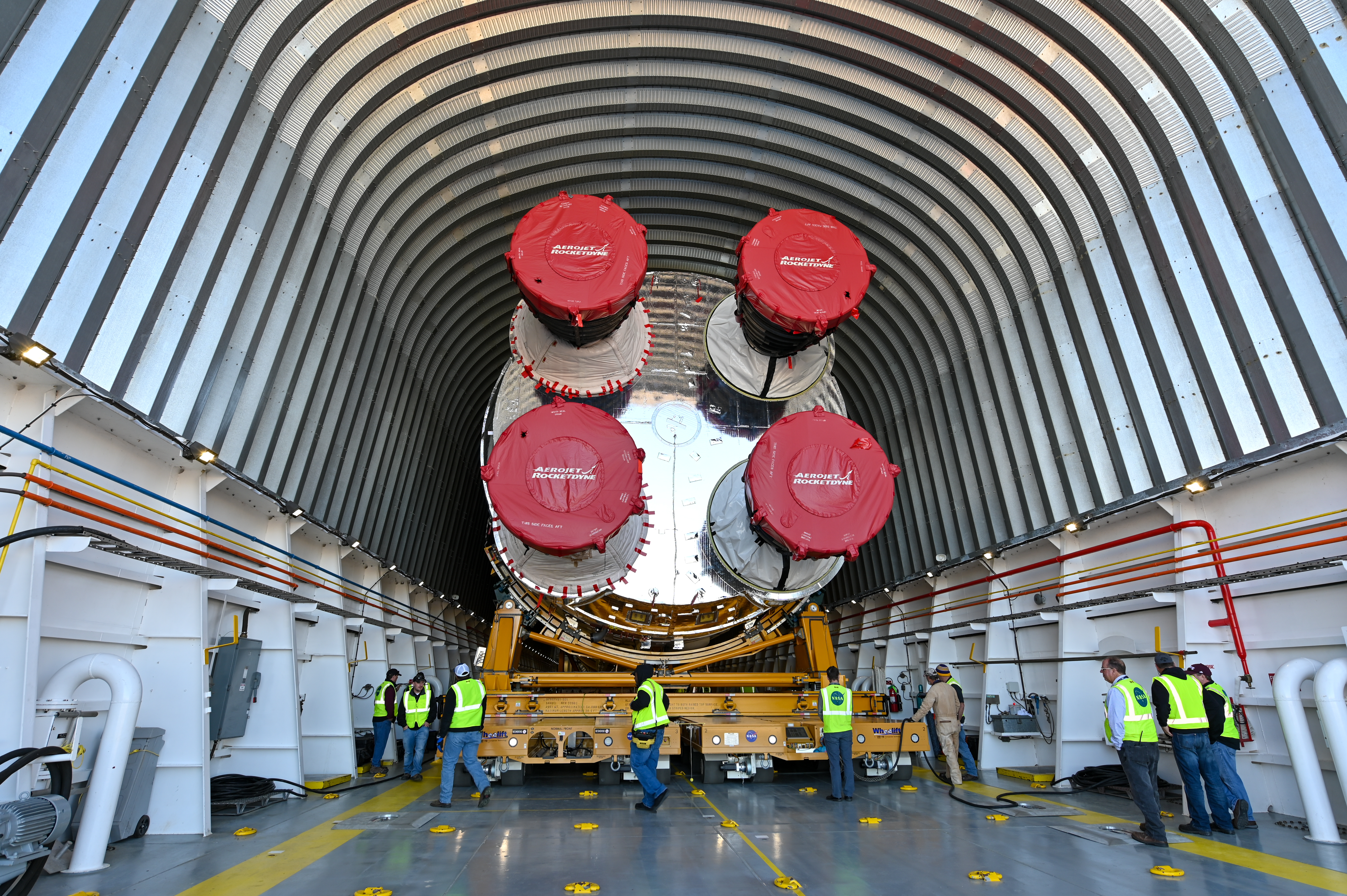
Meanwhile, the active tropical cyclone of Laura formed off the coast of West Africa on 16 August and was initially labeled “Tropical Depression 13”, moving swiftly westwards and gradually strengthening in ferocity. It brought heavy rainfall and flash flooding to parts of the Caribbean, impacting Haiti and the Dominican Republic with particular severity and forcing the evacuation of a quarter-million people in Cuba. Making landfall in the Dominican Republic on Sunday it regained strength and began moving west-northwestwards to the Gulf Coast. And by last night, Laura sat off the western coast of Cuba and was making steady progress towards Louisiana with sustained winds of 65 mph (105 km/h).
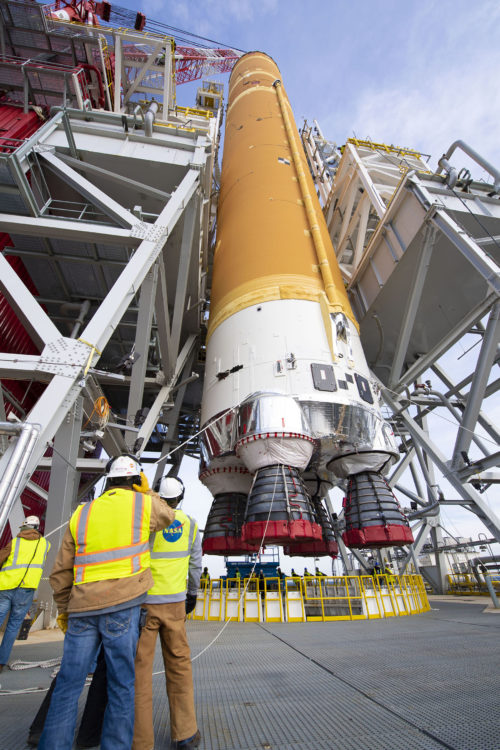
The pause in Green Run operations is unfortunate, considering that NASA teams have made remarkable progress on wringing out the 212-foot-tall (64.6-meter) core stage in the veteran B-2 Test Stand at Stennis. Despite the worldwide march of the COVID-19 coronavirus pandemic, four of the eight planned Green Run tests have been completed, with Test 5 of the TVC and hydraulics considered to be the final “functional” test before the last three steps: simulating the countdown sequence, performing a fully-fueled (or “wet”) dress rehearsal and hot-firing the four RS-25 engines.
“The team was already working on Test 5” at the time of the pause, Tracy McMahan-Mayhan of NASA’s Marshall Space Flight Center (MSFC) in Huntsville, Ala., told AmericaSpace late Monday. “The team is working virtually on forward work and that will continue as usual. Operations at the stand will resume after the storm. The schedule is very fluid since each test builds on the last one, but Test 5 is the last functional checkout.” The countdown sequence simulation and Wet Dress Rehearsal (WDR) “really are the final steps” before the hot-fire sees four heavily-modified shuttle-era engines roar to life with a combined impulse in excess of 1.6 million pounds (720,000 kg). “The goal,” added Ms. McMahan-Mayhan, “is to complete the hot fire by November.”
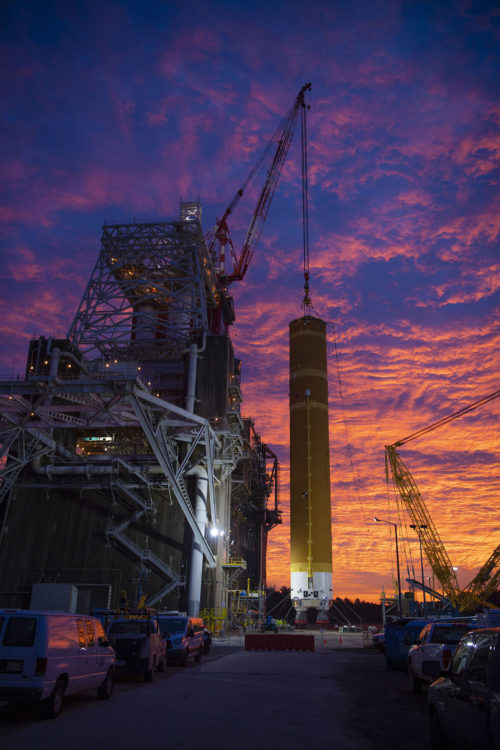
The core stage was delivered to Stennis from NASA’s Michoud Assembly Facility (MAF) in New Orleans, La., aboard the Pegasus barge in the second week of January. It was lifted into the B-2 Test Stand later that month and was put through its first Green Run test within days. Known as the “Modal Test”, this process utilized mechanical “shakers” to impose dynamic forces on the core stage to identify bending modes. Information from this test is expected to aid the verification of vehicle models necessary to operate the SLS Guidance, Navigation and Control (GNC) systems.
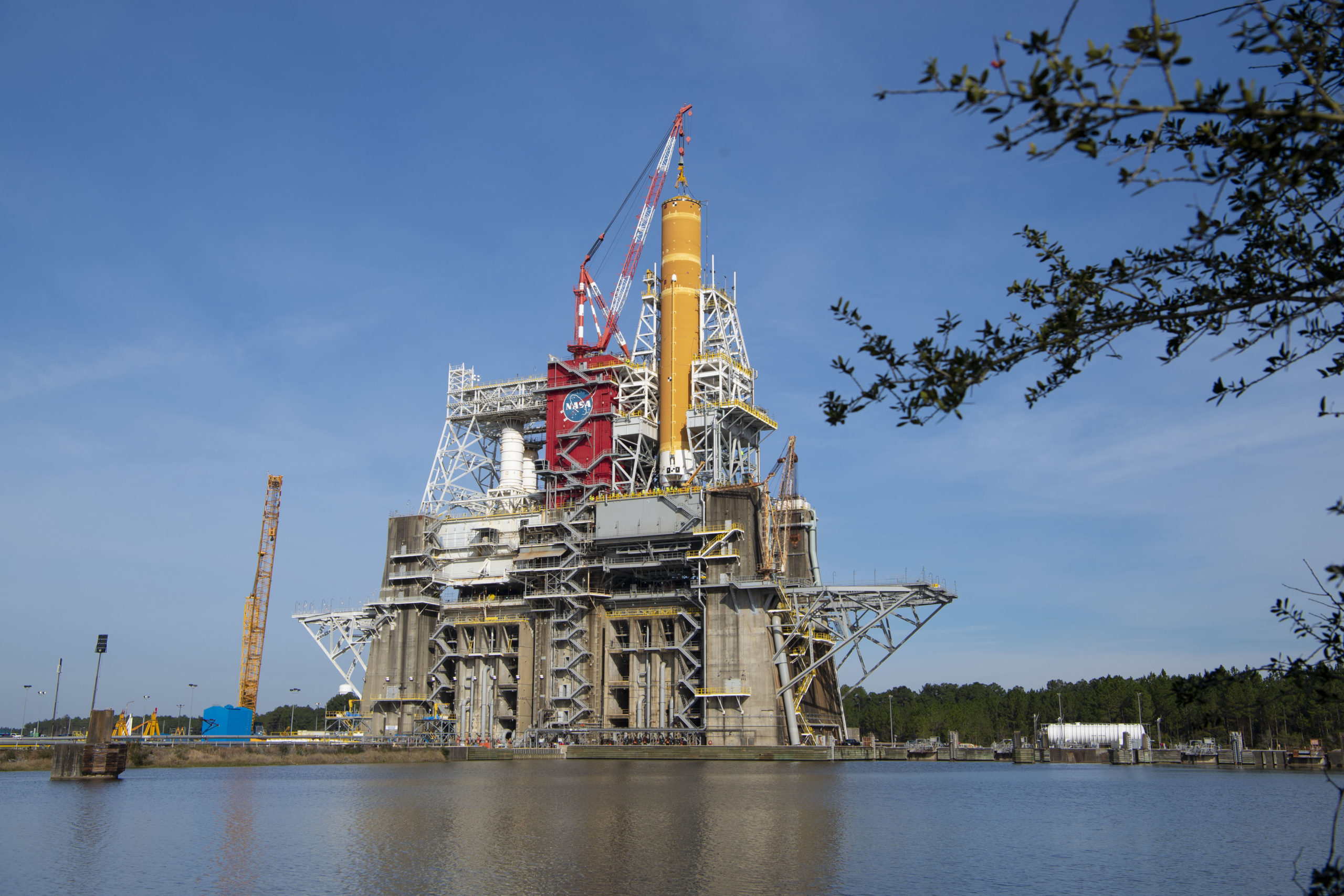
But the coronavirus pandemic pushed Stennis into a “Level Four” posture on the scale of NASA’s response framework in March, with only personnel needed to perform mission-essential activities relating to the safety and security of the center permitted on site.
Work resumed in a reduced capacity in mid-May and at the end of June the second Green Run test—the “Avionics Test”—was successfully completed. As part of this test, the rocket’s avionics, which are distributed throughout the core stage, were powered-up and checked out. This included the flight control computers and electronics and a multitude of sensors which gather flight data and montiro the overall health of the core stage in flight. The third test, dubbed “Fail-Safes” and completed in early July, checked out the rocket’s safety systems which will shut down operations during testing and incorporated several simulations of potential problems. The fourth (“Propulsion”) test, concluded earlier in August, checked the core for leaks and evaluate command-and-control operations for the Main Propulsion System (MPS) elements which directly interface with the RS-25 engines.
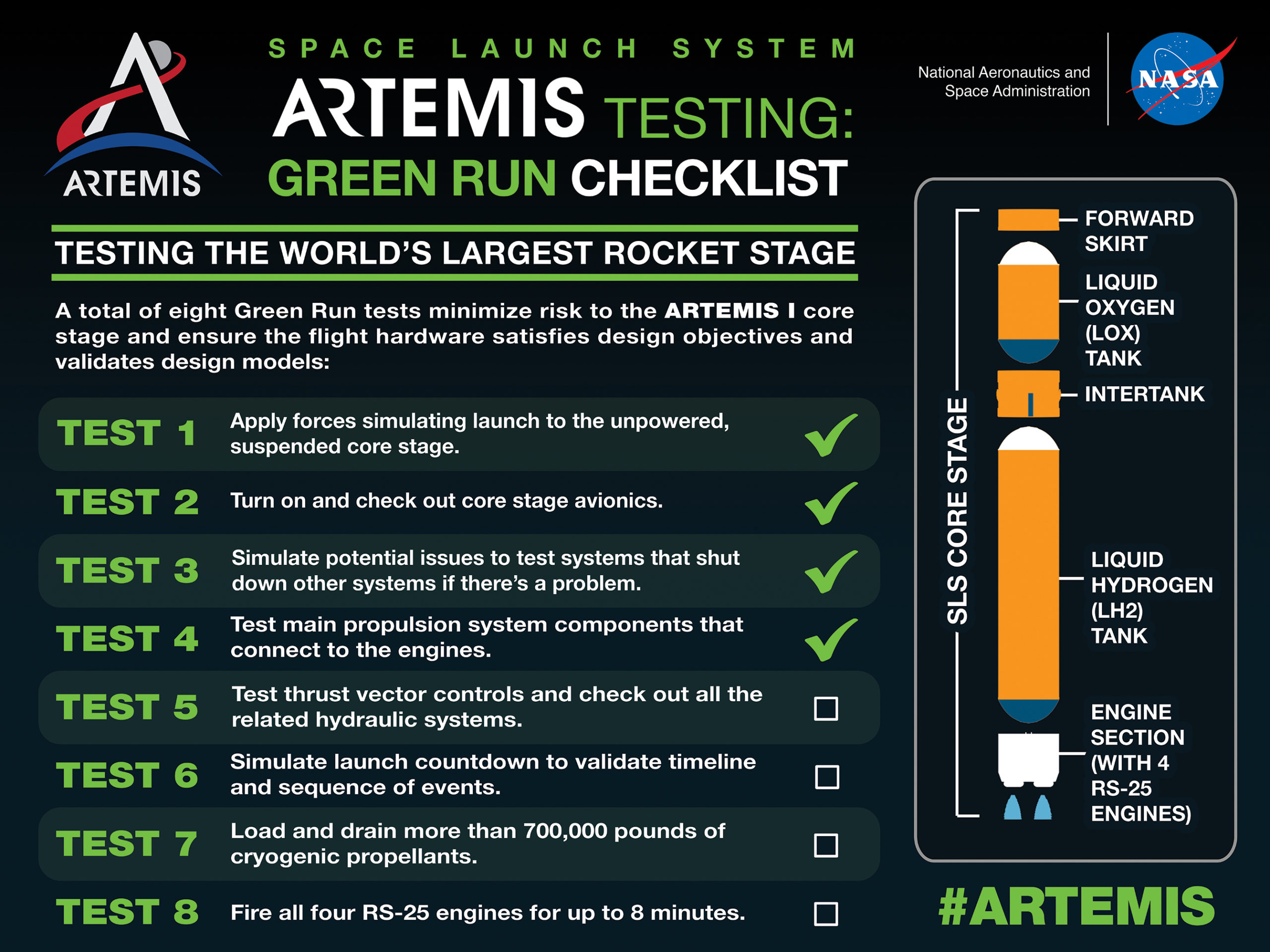
All of this work is being undertaken in a test stand which traces its ancestry back to the 1960s and is part of a dual-position, vertical-firing complex upon which the S-IC first stage of the mighty Saturn V and its five F-1 engines were tested. Since then, it also housed the Main Propulsion Test Article (MPTA) framework to test the Space Shuttle’s main engines. Heavily modified for SLS core stage testing, the B-2 Test Stand was declared operationally ready for SLS in December 2018. It is now being secured against Marco and Laura.
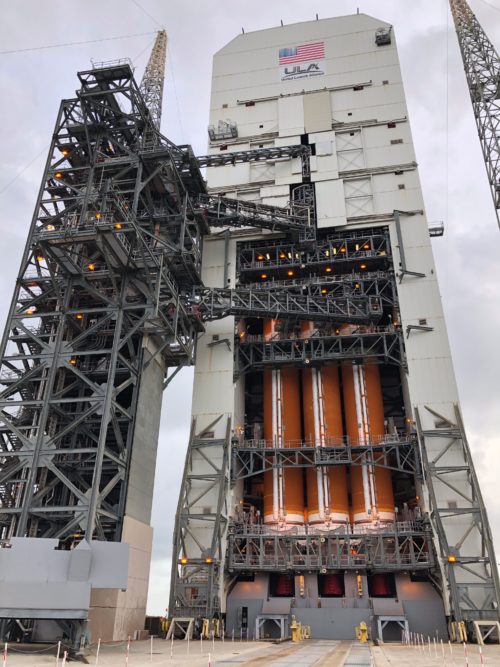
“The core stage and B-2 stand have been secured and will remain in a secure state until any impacts of the storm are assessed and operations can be resumed,” Ms. McMahan-Mayhan explained. “Stennis Space Center is currently open at Hurricane Condition III and will remain there unless conditions call for a change.”
With the two storms making steady progress towards the Gulf Coast, it remains to be seen how long the Green Run campaign will be paused. “There is no way to predict how long this pause will last or what the impact of the storms might be,” Ms. McMahan-Mayhan told us. “However, there are some weather days built into the schedule. The goal is to deliver the core stage to KSC early next year.”
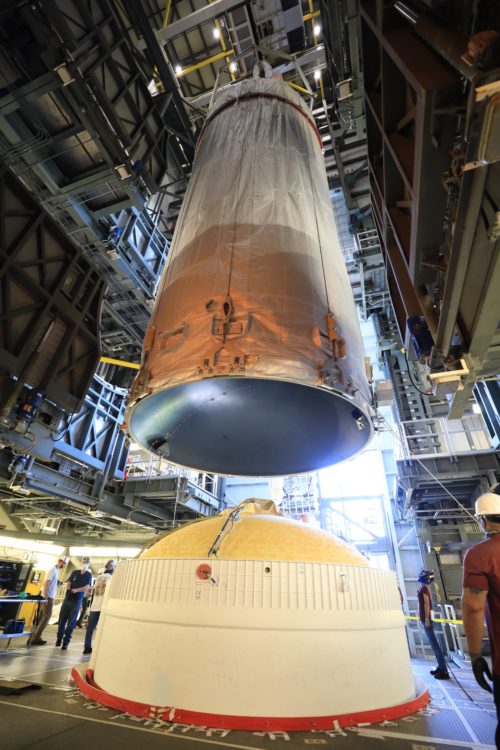
Meanwhile, on the Space Coast, United Launch Alliance (ULA) has delayed its scheduled Wednesday flight of a triple-barreled Delta IV Heavy booster carrying the highly secretive NROL-44 payload for the National Reconnaissance Office. Having satisfactorily completed the Launch Readiness Review (LRR) on Monday, launch was anticipated at 2:16 a.m. EDT Wednesday, producing an impressive middle-of-the-night light show for onlookers at the Cape. But ULA revealed late Monday that a 24-hour slip had been called, “due to customer request” from the National Reconnaissance Office. Liftoff was correspondingly rescheduled for 2:12 a.m. EDT Thursday, 27 August. Weather conditions for both Thursday and a backup opportunity on Friday are 80-percent-favorable, with a slight chance of violating the Cumulus Cloud Rule.
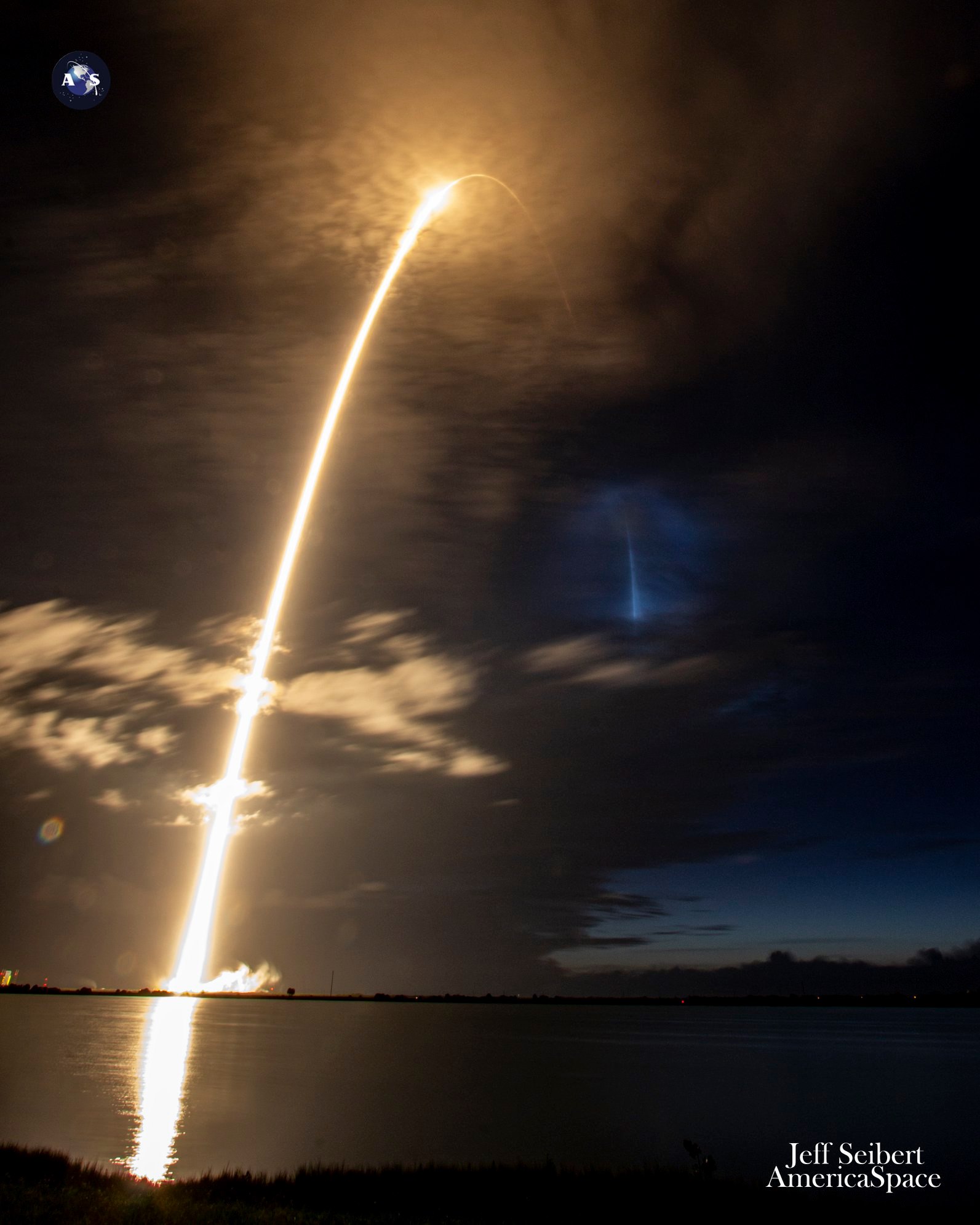
The impact on a pair of back-to-back SpaceX Falcon 9 missions from the Space Coast—the first from Space Launch Complex (SLC)-40 at the Cape, carrying Argentina’s long-delayed SAOCOM-1B Earth-observation radar-imaging satellite, and the second from historic Pad 39A at the Kennedy Space Center (KSC) with a batch of Starlink low-orbiting internet communications satellites—remains to be seen. Original plans called for these two missions to fly just 39 hours apart (a new SpaceX record) on Thursday night and Saturday morning, respectively.




